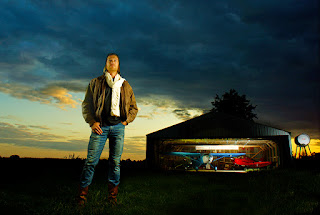ESTABLISHED 2010 - Beyond The Campfire was created to encourage readers to explore the great outdoors and to observe it close up. Get out and take a hike, go fishing or canoeing, or simply stretch out on a blanket under a summer sky...and take your camera along. We'll talk about combining outdoor activities with photography. We'll look at everything from improving your understanding of the basics of photography to more advanced techniques including things like how to see photographically and capturing the light. We'll explore the night sky, location shoots, using off camera speedlights along with nature and landscape. Grab your camera...strap on your hiking boots...and join me. I think you will enjoy the adventure.
Wednesday, October 4, 2017
Using Light as an Artistic Tool
All of us take light for granted. Even though it surrounds us and permeates our lives with a myriad of flavors
and colors, it seems so common, so ordinary and everyday, we simply choose to overlook its influence. In spite of it being such an important element in our lives, we often look past it simply because it is always there. However, as a photographer Light is the most important element in our craft. I am always conscious of the effects of light even when I am not carrying a camera. I not only see it, I observe it, I watch it closely, I recognize those special moments when by itself, it becomes the subject of what I am looking at. Over the years this awareness of light evolved into a conscious understanding of its nature and how its nature can be used as a photographic tool.
Many years ago I spent a good amount of time developing my artistic flair...I drew pictures of people and places. During that time I did a lot of reading about art and artists and before long it became evident how the great artists understood the use of light...and more importantly how they used the absence of light to create depth and character. In time as my artistic drive shifted more toward photography, this revelation about light has served me well. Light then simply became another tool of an artistic trade.
Light can be used as a tool in many ways; it can be directed, toned down, brightened, softened, blended, recolored, and used from different directions at the same time. It can create shadows to create character. It can be directed to fill in the small spaces where not enough light exists or it can be blocked to create a darker moodier tone. It can bring life to an otherwise dull composition. It can be accumulated or subtracted. In short, light is perhaps your most important and versatile photographic tool simply because it is so versatile.
Take this photograph I call The Pilot. Several phases and planes of light were used in creating this image. The ambient background light, all natural in its flavor, created the overall mood of the image. From that, I added some fill lights to illuminate the airplane hanger and the pilot.
All three of these light planes were of different intensities, yet when blended together the impression of the light creates an interesting result. Light then was used to sculpt the final image and bring to life three separate compositional elements; the hanger with the airplanes, the background sky setting, and the pilot. Light became the chisel used to carve out the depth and character of the portrait.
Light is unique in that it alone can create shadows or it can provide full illumination. By changing the angle and the direction of the light along with its intensity, you can create soft or harsh shadows or highlights. Depending on the mood of the image, light is used as element connectors to bring the composition together not unlike nails or screws are used to connect separate pieces of materials.
There are times we can take light and use it to create order within what might otherwise be an ordinary composition. Flat and dull light will often create a flat and dull image that exhibits no real quality, only a sense of chaotic jumbleness. But, throw on some extra light, change its angle, and alter its intensity above or below the ambient light, and you can isolate what is truly important and separate it from the chaos of what surrounds it.
When attempting to build an interesting composition, regardless of what it is, the first thing I evaluate is the light. Even if all the elements line up correctly but the light is wrong, it just will not work. But, when you approach your photography using the idea that light is another tool you can use to build your image, it changes how you visualize your final image. Light is a powerful tool and when used creatively helps you to build not only amazing images, but a powerful vision.
Subscribe to:
Post Comments (Atom)






No comments:
Post a Comment